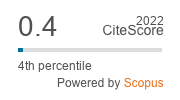Semiochemicals from the aggregation site of home invading nuisance pest, Luprops tristis (Coleoptera: Tenebrionidae)
DOI:
https://doi.org/10.33307/entomon.v39i2.41Keywords:
Mupli beetle, Luprops tristis, home invasion, aggregation site, semiochemicalsAbstract
Luprops tristis (Mupli beetle) is noted for the magnitude of nuisance caused by home invasion in millions prior to monsoon rains and subsequent dormancy inside residential buildings in rubber plantation belts of Kerala state of India, for the last three decades. Return of the new generation beetles into the same shelters used by parent generation strongly suggests the involvement of semiochemicals based at aggregation sites and identification of such semiochemicals may offer alternative management strategies for this nuisance species. In the present study, air borne volatiles from the aggregation site during different phases of dormancy were collected, identified, bioassayed for behavioural response and possible role of identified volatile compounds in the selection of aggregation sites and maintenance of aggregation has been discussed.
Downloads
Published
How to Cite
Issue
Section
License
Copyright (c) 2015 ENTOMON

This work is licensed under a Creative Commons Attribution-ShareAlike 4.0 International License.


